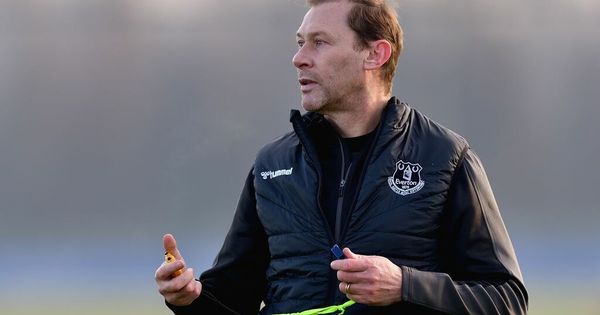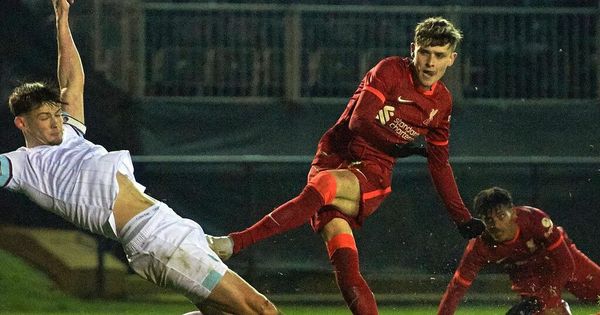
@TheKnowledge_GU Just watching the Chelsea FA Cup game and noticed that the two team abbreviations differ by only one alphabetical place. Surely this won’t happen very often? It can’t be beaten, but any others the same or close? pic.twitter.com/VArccT5cax
— james (@_mosef) January 8, 2022
When Chelsea met Chesterfield in the FA Cup third round, the preferred hashtag was #CHECHF rather than the more accurate and frankly soul-stirring #CHECHE. But this act of cultural vandalism did at least facilitate a decent question, and give our readers the opportunity to burst with trivia.
“When Colchester United knocked Crystal Palace out of the League Cup two years ago I thought it was just your everyday shock,” writes Neil O’Sullivan. “However, the full significance is apparent as the abbreviations for the two teams differ by just one place alphabetically: CPL v COL.”
John McDougall has an example from international football. “If Australia played Austria it would be AUS v AUT,” offers John. “Not sure we have played them.” Not in the men’s game, as far as we can tell, but it has happened in the women’s game. In April 2015, AUT beat AUS 2-1 in a friendly.
Here are a few more, via SCL MDA DSG Twitter.
In international football there are a few potential fixtures - AUS v AUT, CAM v CAN, COL v COM, MAC v MAD, SOL v SOM. Only the first (Australia v Austria) has actually happened competitively, though
— Steve Hyde (@StevenJamesHyde) January 12, 2022
Sheffield United and Sheffield Wednesday are only one away ..SHU and SHW.
— SecondInternationalist (@SecondInternat1) January 12, 2022
In terms of live televised games, probably not many, but Bath City and Basingstoke have played each other fairly regularly over the past 15 years #BASBAT
— Agatiefan (@AgaTieFan) January 12, 2022
You’d think Bournemouth v Boreham Wood in the next round of the FA Cup would probably be BOU v BOR which is only a couple of letters out.
— Agatiefan (@AgaTieFan) January 12, 2022
Clydebank played Clyde earlier this season in the Scottish Cup. The Bankies hadn't qualified for some time so Sky didn't have the old abbreviation to hand (I think it was C'Bank). Instead they went with this. pic.twitter.com/Lc2uDKeSiG
— Craig Stewart (@CraigStewart75) January 12, 2022
Finally, a couple of kooky examples that have little to do with the original question but are nonetheless worthy of note. “When Sweden play at home to Denmark,” writes the mysterious XX, “the abbreviations spell SweDen and the omitted letters spell DenMark.”
And finally, who could forget the great WALRUS of 2003?
No countries for local heroes
“This season will be the 30th season in a row where the English top flight is won by a non-English manager,” mails Jerry Higgins, arrogantly writing off Brighton’s title hopes. “Has any other league had such a long run of being won by non-domestic managers?”
Tim Dockery has gone above and beyond on this one. “As I see it, a non-Saudi has won the Saudi Pro League every season since 1987,” he writes. “In that year, Khalil Al-Zayani, who had previously coached the Saudi national team to win the AFC Asian Cup in 1984, won the league with Al Ettifaq. In the 34 years since, the league has been won by coaches from 11 different countries.”
Tim did list the winning coaches in all 34 seasons. For reasons of space, and perhaps sanity, we won’t print that here, but it includes Henri Michel, Omar Borrás, Artur Jorge, Joel Santana and our old friend Christian Gross.
Rough and ref justice
“Has any player had to leave a game after colliding with a referee?” wonders Gerard Parker.
Let’s start with world football’s hottest property. In May 2020, when football was feeling its way back after Covid, Bayern Munich won 1-0 at Borussia Dortmund to effectively end the Bundesliga title race. Dortmund’s chances weren’t helped when Erling Haaland went off injured in the second half after twisting his knee when he collided with referee Tobias Stieler. Depending on which country you’re in, and whether you’re Arsène Wenger, you might be able to see the incident here.
That’s the only example we’ve found of a player coming off injured after a collision with the referee. But officials can sometimes bear the brunt too, as was the case with Keith Stroud in 2015, when he had to be replaced at Hillsborough during Sheffield Wednesday’s game with Hull City. Chuba Akpom accidentally went through the back of him, resulting in the required change.
Rutger IJzermans also has a bizarre tale that is well worth telling. “On 14 January 2018, during a Ligue 1 match between FC Nantes and Paris Saint-Germain, Nantes’ Diego Carlos accidentally collided with referee Tony Chapron,” writes Rutger. “If anything, it was the ref’s fault as he changed the course of his run and crossed Carlos’s path. This didn’t stop Chapron from kicking out at the player when he was on the floor. He gave Carlos a yellow card too, which happened to be his second of the game. So, technically, Diego Carlos had to leave the game after colliding with the referee. Here is footage of the incident.” Yes, there is a postscript. “Chapron was suspended after the match,” adds Rutger, “and ended his career as a ref.”
Knowledge archive
“After playing almost one half as a centre-forward in last week’s Cup game against Vard, IK Start’s Kristoffer Paulsen has played in all the 10 different outfield positions of the side’s 4-3-3 formation this year,” wrote Eivind Lindeberg in 2007. “Even though he has yet to touch the keeper gloves, this sounds quite impressive. Anyone ever heard of something similar?”
Step forward Steve Palmer, surely the only footballer to have attended Cambridge University, played a first-class cricket match for them and appeared during one season in 11 positions for a club. The campaign was 1997-98, Palmer was at Watford, and going into the final home game of the season it was noted that Mr Versatile had yet to don the goalkeeper’s jersey.
Chris Wardle took up the tale: “Of course, when this was pointed out to Graham Taylor, Palmer had to start the match in goal. His teammates kicked off and immediately booted the ball into touch, allowing him to swap shirts with a defender who, coincidentally, happened to be Watford’s regular keeper.” Palmer finished the campaign having worn a full set of shirts from 1-14.

More recently, in 2005-06, Sheffield Wednesday’s Lee Bullen achieved the feat. There was, as Richard Sargeant and Adrian Burkinshaw pointed out, a terrific twist when Bullen stood in as an emergency keeper at Millwall after an injury to David Lucas. “With no goalkeeper on the bench,” recalled Richard, “Lee, who had already played in all 10 outfield positions, was asked to put on the gloves. The Lions soon put the ball in the back of the net only for the referee to disallow the goal. Bullen went on to keep a clean sheet and the mighty Owls won 1-0.”
Also worthy of a mention are David Webb and Mick Tait. Webb, noted Mark Turnbull, “played in all 11 positions for Chelsea – even starting in the goalkeeper’s jersey against Ipswich in December 1971, when he kept a clean sheet”. Webb got the nod because the regular goalkeeper Peter Bonetti and his deputy John Phillips were injured and the ‘A’ team keeper Steve Sherwood arrived too late despite a motorway dash. “I believe,” Mark added, “that Webb wore shirt numbers 1-11 at a time when numbers actually meant something.”
Craig Wilson went similarly misty-eyed thinking about Tait’s contribution to Portsmouth. “He played in all 10 outfield positions, although admittedly over a slightly longer period than a year,” wrote Craig. “He was incredibly consistent, scoring goals and being just as brutal and clumsy in all of the positions he played. But that’s why we loved him.”
Can you help?
“Fulham are top of the Championship with a goal difference of +47. I am acutely conscious of their capacity to screw things up, however, so what is the best goal difference a team has had and not been promoted,” asks Richard Hirst.
In making his debut for @AVFCOfficial Coutinho has now played for 5 European teams, all of whom have won the European Cup or Champions League. Can anyone better that?
— Jez Orbell (@JezOrbell) January 18, 2022
“According to Wikipedia, Jesper Blomqvist only managed to score one goal for six of the clubs he played for: Milan, Parma, Manchester United, Everton, Djurgarden and Enkoping. Can any other outfield player boast a longer list of teams they have only scored a single goal for,” wonders Kieran Whooley.
@TheKnowledge_GU with Boston United currently occupying a play off spot despite having lost as many games as they’ve won, has a side ever finished a season in the play offs (or better, been promoted) with more defeats than wins on their record? pic.twitter.com/ECJwjUgGcg
— Christian James (@bostonutdstats) January 17, 2022
Which player has been on the bench of their national team the most times, without ever making an appearance, even for a single minute?
— Ben Janeson (@BenJaneson) January 18, 2022
• Mail us your questions or tweet @TheKnowledge_GU.










